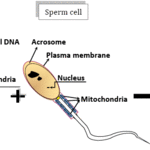Ecology & Zoology

Apparently, the female ancestor of present-day polar bears was a brown bear, living in what presently corresponds to Ireland. An international research team has used mitochondrial DNA (see figure 1) to trace back the polar bears (maternal) ancestry. And it turns out that, 20,000 to 50,000 years ago, they interbred with brown bears.
Figure 1: During fertilization, the sperm cell does not contribute mitochondria to the egg.
(Source: http://www2.le.ac.uk/departments/emfpu/genetics/explained/mitochondrial)
Despite the obvious differences in body size, skin and coat color, tooth type, fur…

It's totally a thing! The vast majority of squid caught off the west coast of the Americas, both North and South, is shipped to the other side of the Pacific Ocean to be processed in Asia. Much of it, of course, is consumed there as well, but a non-trivial amount is then shipped east again, to be eaten just a few miles from where it was caught.
This is true for all squid species, but perhaps most notable for the California market squid:
Only four local processing plants remain as part of Monterey Bay's 150-year-old market squid fishery (first harvested, ironically, by Chinese fishermen in the…

A mystery has emerged in the past three weeks that may have a very simple answer -- but an answer that we're not aware of -- and that's the mystery of what happened to the butterflies?
The question arose last week when I was leading a group of kids on one of our nature hikes at Trinity River Audubon Center. As part of the activity where we're studying insects on the TRAC property, they were engaged in trying to find certain common objects so that their team could make a "nature bingo." When I make these game sheets, I keep the objects simple and easy to find so that…

It never fails--I take some time off, and a giant squid shows up!
A few years ago, it was a half-eaten carcass found floating in Monterey Bay. Every teuthologist dreams of a giant squid sighting in her backyard, but Fate's wicked sense of humor had me taking a summer course in Friday Harbor when my dream came true. So while I was playing with worms, my labmates back home were eagerly dissecting the largest giant squid ever seen in Monterey Bay.
Not that I'm bitter or anything.
Anyway, this time I went to camp in the mountains for a week, and missed a massive media flurry over an almost-…

You know a problem is real when academics say they don't need 5 more years of funding to know what is going to happen.
But that's the situation in the Great Lakes and the threated posed by Asian carp, according to Bill Taylor, University Distinguished professor in global fisheries sustainability at Michigan State University . "The costs of hydrological separation are high, but it's a one-time expense and remediation in the Great Lakes from these invasive species will eventually make separation look cheap."
Taylor is one of four Great Lakes and Mississippi River researchers…

Yoda, a 14-year old female dog of mixed breed (chihuahua and Chinese crested dog) has won the World's Ugliest Dog competition, held in Northern California. Abandoned behind an apartment building, the current owner, Terry Schumacher, first mistook Yoda for a rat. Upon closer inspection, it turned out that it was a dog in need of help.
As winner, Yoda received a trophy and $1000 prize money.
Congratz, Yoda!
One of the nice things about studying a big charismatic animal, like the Humboldt squid, is that you don't have to convince anyone that your science is cool. People are already interested in your science as soon as you tell them what you study. Journalists want to interview you; filmmakers want to video your animal.
Unfortunately, that last item can turn into one of the not-so-nice things. Filmmakers tend to be on a pretty tight schedule, so sometimes you'll get a call like, "We're going out on a boat on October 12th--can you find squid for us?"
And you have to be all like, "Uh, no, I can't.…

Whenever friends or family learn that there exists in the depths of the sea a particular species known as the Dana Octopus Squid, they draw the obvious conclusion that I must have been named after this squid, or (even more flattering) the squid was named after me. Alas, neither is the case. Wikipedia reveals all:
Taningia danae is named after Danish fisheries biologist Aage Vedel Taaning (1890–1958), who often traveled on the research vessel Dana.
Of course, the truly perceptive will note that since my name has two n's, there can be no possible connection between the squid and me.…
Wish I could go see this exhibit! Creatures of the Abyss is on display at the Royal Alberta Museum,
The exhibition’s focal point is a fibreglass model of an eight-metre long colossal squid caught in the Antarctic water in 2007. Weighing about 495 kilograms, it uses its two waving tentacles and eight arms for propulsion. Its main predator is the sperm whale.
And it's hands-on! How cool is that:
The St. Albert Gazette points out that the deep-sea exhibit is a real trip for landlocked Albertans:
As landlubbers used to the flat, open vistas of grain fields, the diversity of creatures living at…

Chuck over at Ya Like Dags? just posted a compelling piece called 101 Uses for Shark Puke. His list may not have reached (anywhere near) 101 uses, but obviously the most important use is determining the range of the giant squid.
Apparently, blue sharks caught off Ensenada, Mexico, were found to have giant squid beaks in their tummies. As Chuck points out,
The presence of giant squid beaks, aside from raising the question of whether blue sharks are a regular predator of Architeuthis dux, represents the southernmost appearance by giant squid in the California Current ecosystem and is also the…